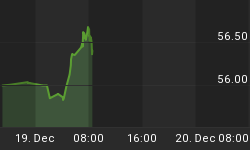A variation of this article appeared today as an editorial in the Financial Times
Crises are always going to happen, but they are less stressful when sound institutional processes are in place. The most positive takeaway of the recent Eurozone summit was the announcement of an integrated supervisory mechanism as a precondition to any bank bailout. A European guarantee of Spanish bank deposits without a corresponding handover of banking supervision would only perpetuate bad habits.
It should not be too much to ask for a process; using ECB President Draghi's words, policy makers in the Eurozone must "define roles, deadlines and conditions to be satisfied." Yet, since last summer, the modus operandi in managing the crisis has generally been to take two steps back with each step forward. We may have broken out of this downward spiral with the latest summit. But too many questions remain: for example, will the new bank regulator have a strong resolution authority, and be able to seize and liquidate insolvent Spanish banks? Will the influence of national bank regulators be reduced, in part to disallow banks to treat the debt of their own governments as risk-free? Banks are in the business of managing risk and indeed lend to risky customers all the time by unbiasedly pricing in that risk, but when their own regulators indicate that something is risk free when it is not, risky assets are not properly priced and the banking system malfunctions. And while Spain is in the limelight, it would be helpful if regulators of strong countries, such as Germany's BaFin, also ceded control to help root out bad habits. Last summer, when the European Banking Authority (EBA) demanded the publication of sovereign debt holdings, BaFin balked; it was market pressure that "encouraged" German banks to be more transparent. Simply put, national regulators have proven inept at managing their conflicts of interests.
The euro's surge after the summit shows the currency advances on progress in the process. Well-defined processes help markets to function, as buyers and sellers negotiate market-based values of assets. In contrast, guarantees ultimately increase volatility as asset prices become more correlated: everything will be safe until the guarantor is deemed unsafe, thus crashing the system as a whole.
A credible strategy must be in place for investors to regain confidence. Spain is particularly disappointing to investors. Here is a case where a government enjoying an absolute majority at times appears to put more emphasis on negotiating lower borrowing costs than on structural reform that would lower the amounts that need to be borrowed in the first place. This crisis will not end as long as debt is merely shuffled around. Having said that, a lot has been achieved already; in some ways, we already have a United States of Europe: when a weak country asks for help, it receives aid in return for ceding sovereign control over budgeting. The main difference to the emerging vision of Europe is that budgets ought to be reviewed before a crisis erupts. We are inching towards the vision in a typically European piecemeal fashion, with weak countries taking the lead, incentivized by market pressures.
Investors don't need guarantees. Investors need to be properly compensated for the risks they are taking on. At this stage, however, they also need to take into account the risk that the rules of engagement are constantly changing. And to add insult to injury, if an investor lends money to Spain at 7%, they might be labeled a dreadful speculator trying to benefit from Spain's suffering. So why bother?
In the meantime, central bankers around the world, fearing further fallout, are hoping for the best, but planning for the worst. In the Eurozone, it means Long Term Refinancing Operations (LTROs) and lower interest rates; in the U.K., it means quantitative easing; in Japan, it means introducing an inflation target above the current rate of inflation; in the U.S., it means Operation Twist. Even as we are encouraged that pieces of a process are finally coming together, we simply cannot ignore the tail risks in the Eurozone. Meanwhile, there are opportunities elsewhere. However, we don't agree with the conventional wisdom that the U.S. is the safe haven to flee to, not least because of the unsustainable fiscal situation and our expectation of further Fed easing.
Our favorite substitute for the euro while we ride out the storm in the Eurozone is the Singapore dollar. While commodity currencies might be prime beneficiaries of the increased trigger friendliness at major central banks, such currencies are historically rather volatile. The Monetary Authority of Singapore (MAS) has shown the utmost restraint in recent years. In many ways, the Singapore dollar behaves like a European currency without the tail risks. It fulfills that role better than Scandinavian currencies that tend to amplify whatever happens to the euro due to the dependency of their economies on the Eurozone.
Please sign up to our newsletter to be informed as we discuss global dynamics and their impact on currencies. Please also register for our upcoming Webinar on July 19, 2012. Please also follow me on Twitter to receive real-time updates on the economy, currencies, and global dynamics.
















